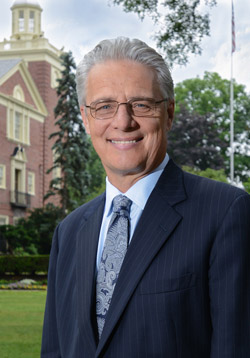
Download Image: Web
Since March 2020, the COVID pandemic has altered in fundamental ways the landscape of higher education. With a few exceptions, colleges and universities completed the 2020 spring semester utilizing remote modes of instruction. Despite substantial financial assistance provided to higher education through the CARES Act, the sector as a whole and the great majority of institutions have experienced substantial revenue losses. For example, the Association of Independent Colleges and Universities of Pennsylvania estimates that its 92 members have revenue losses approaching $500 million.
During May and June 2020, institutions of higher education (IHE) across the United States announced their intention to resume residential education. When the number of new cases in the United States surged from July through mid-August, however, a significant number of institutions reevaluated their plans and announced they would teach mostly remote. Other IHEs decided to reduce the number of students on campus. Swarthmore College, for example, permitted only first-years, sophomores, new transfers, and resident assistants to live on campus during the fall semester.
As IHEs reopened their classrooms and residence halls in late August and early September, some high profile campuses (including Notre Dame, University of North Carolina [UNC], Penn State, and Iowa State) experienced a surge of COVID-19 infections among students. In turn, a number of IHEs, including UNC, quickly abandoned residential learning. Others, like Notre Dame, enacted two-weeks of remote teaching with students instructed to quarantine in their residence halls. Still others, including Penn State, have persisted, despite having more than 1,000 infections, with having students in residence with many classes taught online and others in-person.
Both the popular press and publications that focus on higher education have largely failed to report on the more successful experiences of many small colleges. Lycoming College and three of its Pennsylvania peers —Susquehanna University, Juniata College, and Allegheny College — are examples of places that have made it to the beginning of October with relatively few diagnosed COVID-19 infections. Moreover, none of the four institutions have experienced significant disruptions of their plans for resuming residential education.
It is instructive to reflect upon and understand the reasons for the contrast between the experiences of smaller colleges and that of the large universities upon which the press has focused. One important difference involves ownership of student housing. Over the past couple decades, many universities have outsourced housing to private developers, while most small colleges house all or a high percentage of their students in college-owned housing. This distinction has been critical because outbreaks at a number of universities have been contact traced to off-campus parties in housing not owned by the institution. At Lycoming, however, all students, with the exception of commuters who reside with family members, live in college-owned housing; the situation at the other three Pennsylvania colleges is very similar. As a consequence, Lycoming and the others have been better able to monitor student behavior and prevent large parties from occurring.
Student culture appears to be another plausible differentiating factor. At Lycoming, the faculty and staff have generally been very pleased with student compliance with wearing face coverings, physical distancing, disinfecting desks, and other measures. In a recent conversation, the President of Allegheny College shared a similar observation about her students. Small colleges tend to manifest a stronger sense of community than larger universities, and this aspect of campus culture likely tends to foster a greater willingness to adhere to the principle of social responsibility where one recognizes the obligation to protect others.
Lycoming and the three other institutions also benefit from their location in areas of the state where the numbers of infection have been low. None of the four counties have reported more than 700 cases since March. This factor lowers the probability that students could become infected off-campus and trigger infections on campus.
Finally, while some experts have strongly advocated that frequent surveillance testing is a necessary component of an effective plan, Lycoming’s experience to this point suggests otherwise. Following the guidance of the infectious disease experts in the UPMC system, we have not tested large numbers of asymptomatic individuals, which is the core of surveillance testing. The other three Pennsylvania institutions, however, have all deployed some form of surveillance testing. Despite this significant difference, Lycoming and two of the other three campuses have had fewer than 10 positive cases.
Rather than rely upon extensive PCR testing, which has been in short supply nationally, Lycoming has relied upon public health measures that assume that there are asymptomatic infected persons among the campus population. In addition to standard measures such as face coverings, physical distancing, and good hygiene, we also have adopted, among others, the following public health measures:
- Implemented a 14-day quarantine of students traveling from high incidence states and international students at off-campus sites paid for by the College;
- Adopted the practice of isolating symptomatic students even prior to receiving test results;
- Used contact tracing to quarantine off-campus close contacts of symptomatic students;
- Deployed thirty high-technology temperature scanners and a phone app that students are expected to use daily to report symptoms;
- Limited off-campus visitors and required temperature and symptom screening of those who are approved;
- Limited non-essential student travel, especially to campuses with higher numbers of infections.
While the Lycoming Plan for the Resumption of Residential Education has many other features, these measures have proven to be effective in maintaining a healthy environment for the first six weeks of classes and allowed us to teach more than 95 percent of our classes in-person. I am thankful that compliance by our faculty, staff, and students has been excellent because they have embraced the importance of delivering upon our mission as a residential college. I am also hopeful that we will be fortunate enough to persist to the final day of classes on Nov. 24.
Kent C. Trachte, Ph.D., is the 15th president of Lycoming College.